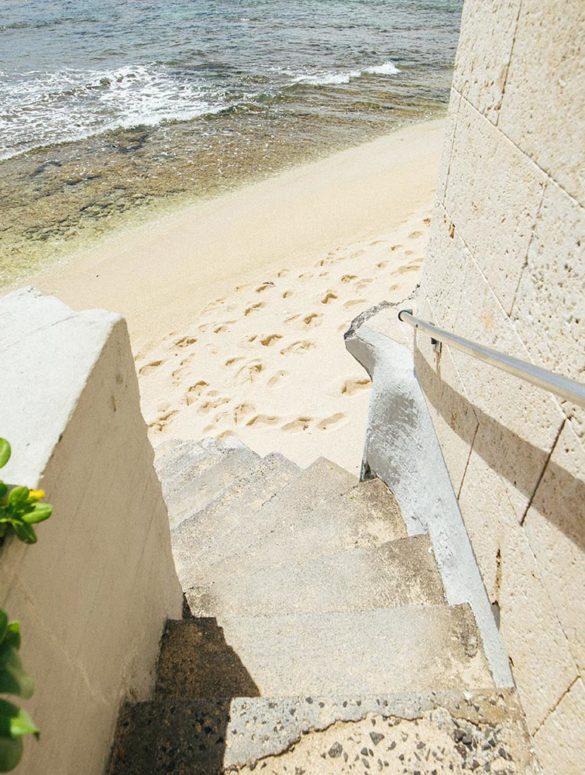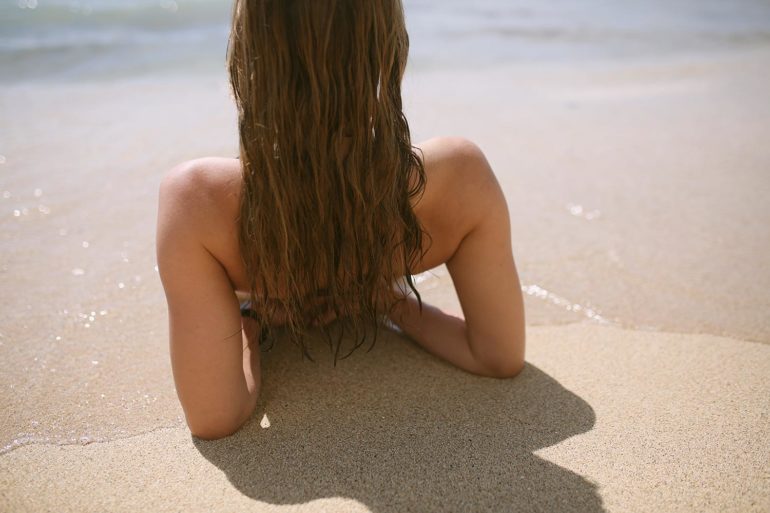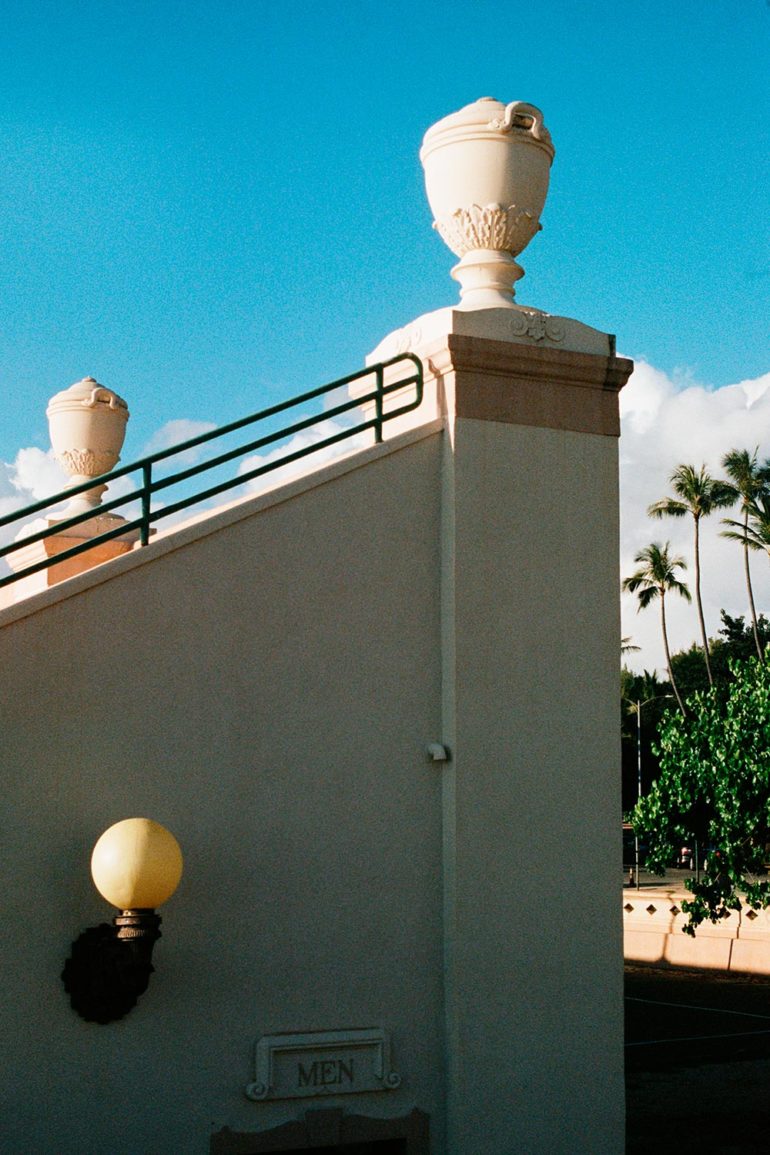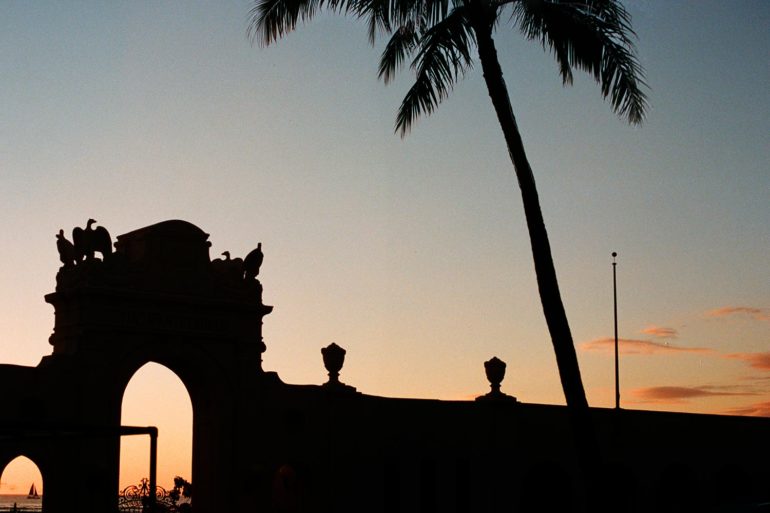Kaimana Beach is silent as I walk across its white sand. Once I’m knee-deep in the crystal-clear aquamarine waters, I push my surfboard seaward, leap aboard, and paddle out to greet another day. Fifty yards out, I use Kapua Channel to paddle around curling waves peeling off over a submerged reef. This wondrous surfing playground is known as Tonggs, named after the surfer sons of prosperous Honolulu businessman Ruddy Fah Tongg, who chose this idyllic coastline to build his estate in 1946. Tonggs is but one of a half-dozen equally notable waves surfed here year-round.
This is my corner of Waikīkī. Its dreamy landscape is bordered by thin beaches that appear and disappear with the seasons, lined by modernist architecture. Hidden pathways that meander along the shore lead to privacy and relaxation. Becoming sans souci, or “without a care,” letting the busyness of the everyday world be the concern of someone else—this is the de facto attitude of those drawn to this low-key piece of O‘ahu’s south shore.
Once upon a time, in the late 19th century, hotelier George Lycurgus dreamed the Waikīkī dream. Lycurgus built small bungalows with thatched roofs and christened the oceanfront resort Sans Souci. Its doors swung open in 1893 and Sans Souci became one of the first visitor accommodations in Waikīkī.
Scottish author Robert Louis Stevenson enjoyed a sojourn at this early destination. Perhaps he even sat under the landmark Sans Souci hau tree, colored with splashes of red-orange blossoms, when he wrote this paean: “If anyone desires such old fashioned things as lovely scenery, quiet, pure air, clear sea water, good food, and heavenly sunsets hung out before his eyes over the Pacific and the distant hills of Wai‘anae, I recommend him cordially to the Sans Souci.”
After surfing, a friend and I sip a smoothie at Sans Souci Beach, known by most locals as Kaimana Beach. Nearby, children frolic in the lapping shorebreak under the watchful eyes of mothers. Sunbathers cooled by steady tradewinds lay in pairs on rainbow-hued beach towels. Stand-up paddle boarders sluice their ways out to the surf while snorkelers float weightlessly offshore.
I return during golden hour, when the warm hues of Hawai‘i reflect the light of a glorious sunset. A dinner invitation has brought me to the terrace of an oceanfront apartment nearby. As the evening moves on, a full moon rises over Waikīkī. The palm fronds of a stand of coconut trees splinter the moonlight reflecting off the surf as the tradewinds still, and my day ends as gracefully as it began.







